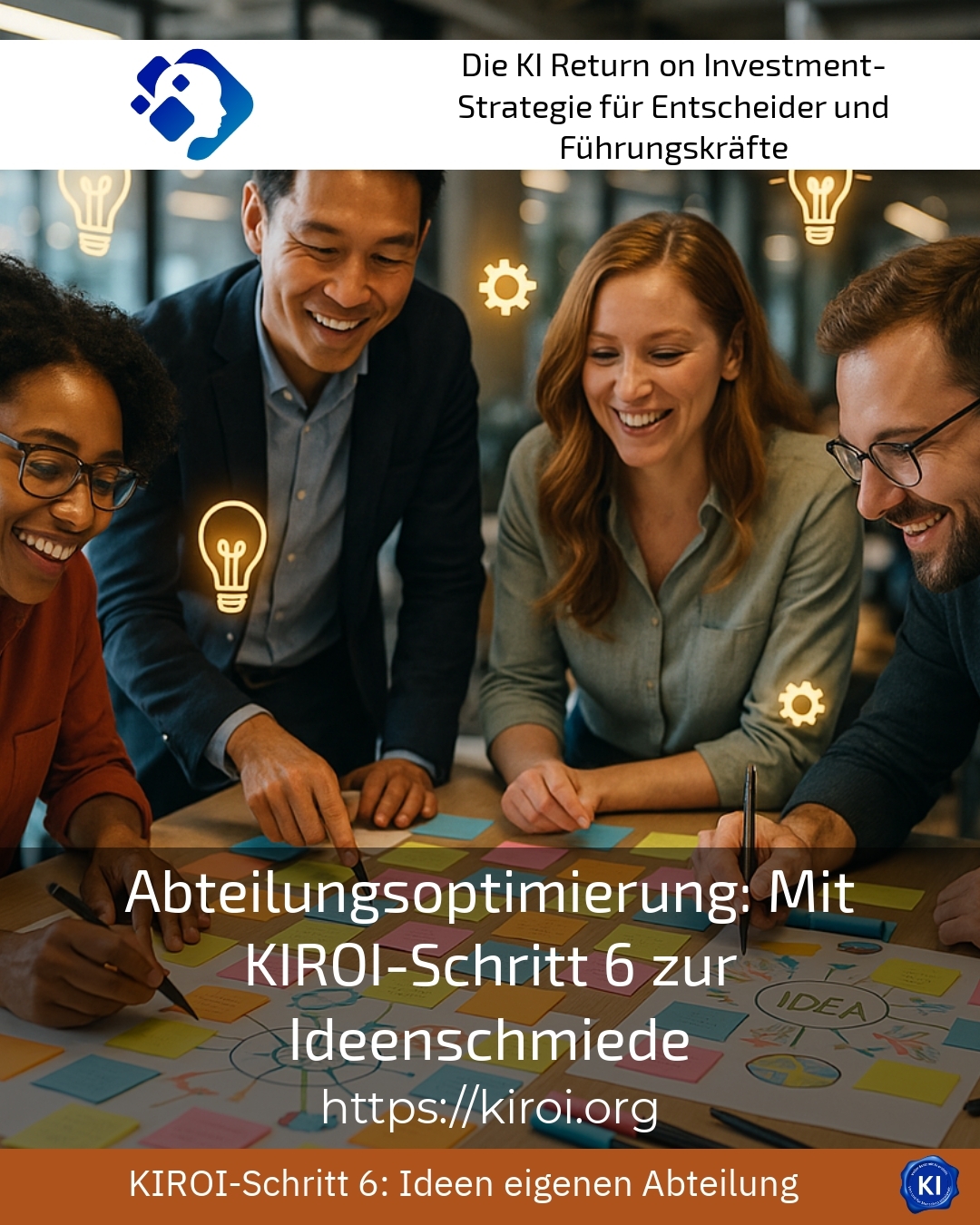Departmental optimisation is an ongoing process that often brings with it many challenges. It is not just about improving existing processes, but also about fostering innovation in a targeted manner. By using KIROI Step 6, it is possible to develop departments as think tanks so that creative solutions systematically emerge. This approach supports companies in the sustainable further development of their teams and structures.
Department optimisation: How KIROI Step 6 provides innovative impetus
The sixth step in the KIROI process focusses on establishing departments as productive think tanks. Instead of simply improving existing processes, employees are actively encouraged to contribute new approaches and implement them together. This strategy promotes the creative potential within the team and facilitates the practical implementation of innovative ideas.
In the HR department, for example, new procedures can be developed for employee retention through collective idea generation. Such approaches go beyond standardised programmes and offer individual solutions that are better tailored to the needs of the workforce. The production department can also find new approaches to process optimisation, for example by using digital tools to better manage processes. The sales department, in turn, benefits from creative marketing concepts that improve customer acquisition and retention.
Systematic support during the ideas process is essential. KIROI Step 6 creates a clear structure for this, in which ideas are collected, evaluated and prioritised. In this way, suggestions do not just remain theoretical, but a realisable catalogue of measures is actually created.
BEST PRACTICE with one customer (name hidden due to NDA contract) The marketing department was able to organise cross-departmental workshops with the help of KIROI Step 6. Employees developed innovative social media campaigns and at the same time mechanisms were introduced to measure the success of these activities. This made it possible to pragmatically implement creative suggestions and measurably increase the ROI.
Impulses for sustainable departmental optimisation
Successful departmental optimisation is based on the integration of new perspectives and the active promotion of teamwork. KIROI Step 6 makes it possible not only to set these impulses, but also to anchor them in the long term.
In the IT department, the methodical use of creativity techniques enables teams to conduct regular brainstorming sessions that lead to innovative solutions for system processes or automation. In the finance department, structured collections of ideas are used to develop proposals for more efficient reporting tools that shorten throughput times. In customer service, on the other hand, new concepts for feedback management are developed that sustainably increase customer satisfaction.
The result is a department that is constantly evolving and at the same time can react flexibly to new requirements. KIROI provides support here as a guide that not only provides impetus, but also offers methodological security so that ideas can be systematically integrated into everyday working life.
BEST PRACTICE with one customer (name hidden due to NDA contract) A methodically planned innovation process was established within the product development department with KIROI step 6. Interdisciplinary teams worked together to develop prototypes that were tested in short cycles. This created an agile innovation environment that noticeably increased productivity.
Practical tips for developing ideas in a team
A number of aspects are important for idea generation to work in the context of departmental optimisation:
- Moderated workshops promote open dialogue and prevent individual opinions from dominating.
- Combining creativity techniques such as brainstorming, mind mapping or morphological boxes increases the diversity of ideas.
- A transparent evaluation that takes into account both feasibility and degree of innovation creates clarity.
These principles can be applied across all industries. For example, one logistics department reported that this approach led to new process ideas for reducing delivery times. The HR department gained better concepts for training programmes through the targeted collection of ideas. And in research and development, the structured exchange of ideas led to ground-breaking approaches that resulted in a competitive advantage.
My analysis
Departmental optimisation gains a new quality through the integration of KIROI Step 6 because it consciously promotes innovation and implements it in a structured way. Teams are not only supported, but actively empowered to develop creative solutions and introduce them pragmatically. This creates a sustainable dynamic that accompanies change and continuously increases the performance of the department.
Companies that embrace this method can achieve noticeable progress with comparatively little effort. Because communication and cooperation within the departments are also strengthened, the end result is not only improved process quality, but also a stronger team spirit.
Further links from the text above:
Department optimisation: With KIROI step 6 to innovative ideas
Department idea optimisation: With KIROI step 6 to success - SAULDIE
Process optimisation: How it works + practical example
Process optimisation: everything to do with
AI as a threat or an opportunity in times of skills shortages?
For more information and if you have any questions, please contact Contact us or read more blog posts on the topic Artificial intelligence here.















